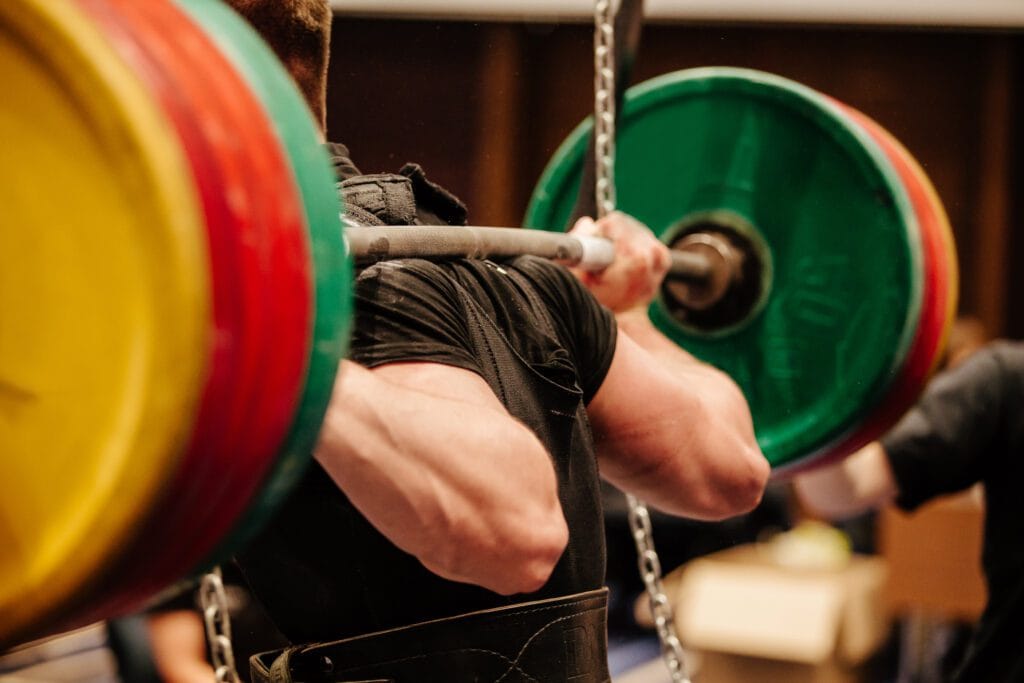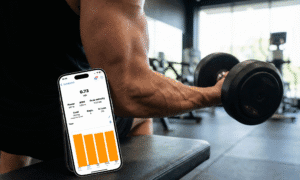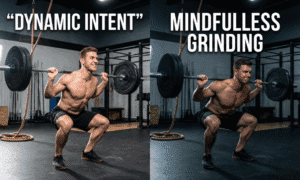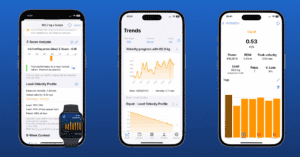你已经在健身房苦练了好几周,甚至好几个月,每天都坚持不懈地训练。就像那句老话说的那样,你举起又放下杠铃,但最近,杠铃上的数字却纹丝不动。这种情况是不是很熟悉?如果你每周都盯着同样的重量发呆,纳闷为什么自己举不起更重的重量,那么你绝对不是一个人。这种瓶颈期会影响到所有人,从周末健身爱好者到经验丰富的举重运动员,而且这是健身中最令人沮丧的经历之一。 力量训练. 好消息是?这种现象背后是有科学依据的,而且还有更好的策略来突破这些顽固的障碍。.
立即下载适用于 iOS、Android 和 Apple Watch 的 SPLEEFT 应用程序!
力量平台期背后的科学
理解渐进式超负荷及其局限性
当你刚开始举重时,你的身体就像海绵一样吸收水分。每次训练似乎都能带来进步,增加杠铃片也几乎成了自然而然的事情。但渐进式超负荷训练的关键在于——它并非只是无休止地往杠铃上加重量。. 渐进式超负荷 从根本上讲,增加神经肌肉需求以促进进一步的适应,但简单地增加负荷这种传统方法并非唯一的出路。1.
研究表明,除了增加重量之外,还有多种方法可以实现渐进式超负荷。你可以增加重复次数、调整执行速度、调整动作幅度、调整休息间隔或改变每周训练频率。6. 这种对进步的更广泛理解,为那些在传统的“增加五磅”方法不再奏效时,仍然不知道如何举起更重重量的人开辟了全新的途径。.
训练中的平台效应是影响职业运动员和业余举重运动员的一大障碍。这种现象源于肌肉-神经轴和各种心肺适应机制之间的复杂相互作用。2. 当你的身体对某种特定的训练刺激过于熟悉时,它就会变得能够高效地应对这种压力,而无需进一步适应。这就好比你的肌肉学会了安于现状,而不是继续生长。.
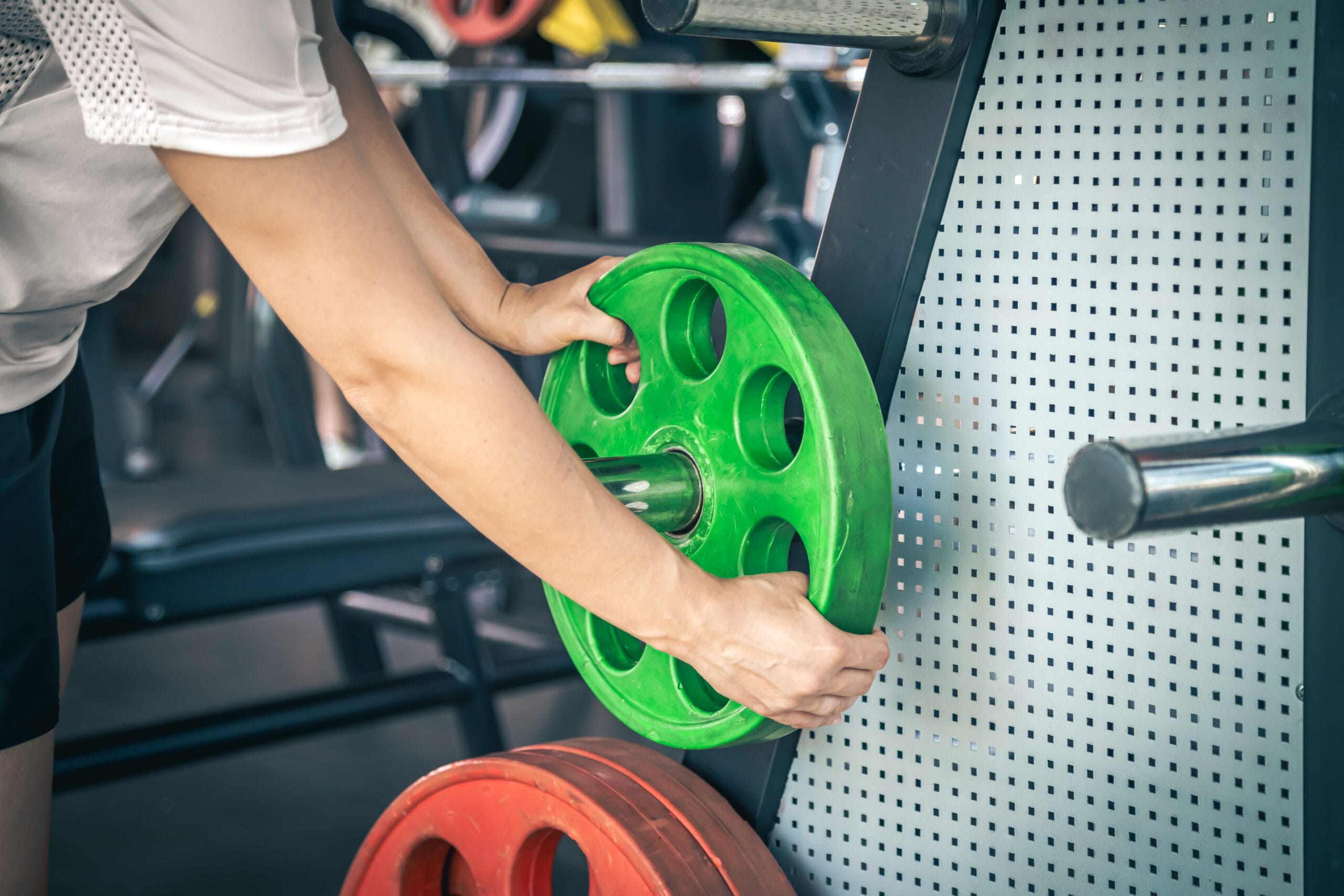
适应和收益递减的作用
你的身体拥有惊人的适应压力的能力,但这种能力在举起更大重量时反而会成为阻碍。你最初经历的快速增长主要归功于神经适应——你的大脑能够更好地募集肌肉纤维并协调运动模式。然而,随着这些神经方面的改善趋于稳定,力量的进一步增长需要肌肉组织发生实际的结构性变化,而这种变化发生得要缓慢得多。.
研究检查时间进程 阻力训练 适应性研究表明,虽然神经功能的改善可能在几周内发生,但肌肉力量的显著提升则需要更渐进的时间。一项针对老年人的研究表明,在为期16周的抗阻训练计划中,每四周肌肉力量都会出现统计学意义上的显著提升,并在训练结束后,部分指标的平均增幅为7.3 ± 4.9公斤。4. 这些数据表明,有意义的力量增长所需的时间比许多举重运动员预期的要长。
重型起重设备失速的常见原因
症结点现象
人们难以举起更重的重量的最直接原因之一在于 症结这些是举重动作中特定的姿势,动作难度会变得异常高,经常导致尝试失败。关键点通常是失败发生的地方,并且会增加运动形式恶化或崩溃的可能性。7.
对于任何认真对待举重的人来说,了解瓶颈点至关重要。这些瓶颈点并非偶然出现,而是可预测的生物力学挑战,它们发生在特定的关节角度,此时杠杆作用最差或肌肉激活不足。例如,在卧推中,许多举重者会在接近胸部的位置遇到瓶颈;而在深蹲中,瓶颈点通常出现在最低点或从下蹲到起身的过渡阶段。.
不同的训练策略可以专门针对这些薄弱环节。适应性阻力训练、暂停式重复训练和部分动作幅度训练都是系统性地解决瓶颈问题的有效方法。当你无法在全幅度动作中举起更大的重量时,针对这些特定的薄弱环节进行训练通常能够提升你整体负重能力。.
编程和周期化问题
许多举重运动员在思考“如何举起大重量”这个问题时,都会陷入线性思维的陷阱。他们认为,如果每周举三次大重量效果好,那么每周举五次更大重量肯定更好。这种方法忽略了周期化训练和恢复的基本原则。.
周期化 代表系统进展的概念,涉及遵循训练变量可预测变化模式的阻力训练计划8. 有效的周期化训练并非持续不断地追求最大负荷,而是包含不同训练强度和训练量的策略性阶段。这种方法可以防止过度训练,同时系统地培养大重量训练所需的各种素质。
关于最小剂量训练策略的研究为此提供了有趣的见解。研究表明,即使是“周末战士”式的训练方法,即每周只进行一次阻力训练,也能带来显著的力量增长。3. 这并不意味着你每周只能训练一次,但这强调了在举重训练频率方面,并非越多越好。.
恢复和过度训练综合症
举重训练中最容易被忽视的环节或许是恢复环节。虽然运动会触发肌肉适应,但运动后的恢复期对于骨骼肌的代谢和结构适应同样至关重要。10. 剧烈运动和恢复之间的周期性周期构成了任何有效训练方案的基础。
当训练引起的疲劳与恢复时间不足之间出现失衡时,运动表现就会下降。针对不同阻力训练方案后恢复情况的研究表明,恢复时间会因负荷大小和组间速度损失而显著不同。11. 涉及更高强度和更大速度损失的方案需要更长的恢复期,然后才能进行后续的高质量训练。
过度训练综合症 恢复性运动障碍(OTS)代表了这种恢复与训练失衡的极端情况。OTS的定义是,尽管经过两个多月的恢复,但仍然持续表现不佳,同时伴有情绪波动,且缺乏其他可识别的原因。10. 虽然大多数休闲举重者不会达到这种极端程度,但亚临床过度训练更为常见,这可以解释为什么有人突然无法举起他们以前轻松举起的重量。.
突破体重瓶颈的高级策略
基于复杂性的负载进展
传统的进展模型主要关注增加外部负荷,但新兴研究表明 复杂性进展 为持续进步提供了另一个强大的工具6. 与其总是问“我怎样才能举起更重的重量”,不如考虑问“我怎样才能让这个动作更具挑战性?”
复杂性进阶训练可能涉及从双侧动作过渡到单侧动作、增加不稳定地面、加入暂停次数,或组合多种动作模式。例如,从常规后蹲进阶到暂停深蹲,再进阶到单腿深蹲,可以增加训练的复杂性,但并不一定需要更大的重量。这种方法对于那些已经尝试过线性负荷进阶训练方案的高级训练者来说尤其有用。
复杂性递进的魅力在于它能够提供新的训练刺激,从而促使身体持续适应。当你的身体已经能够高效地处理特定的负荷和运动模式时,引入复杂性变量会破坏这种效率,并需要新的适应性反应。
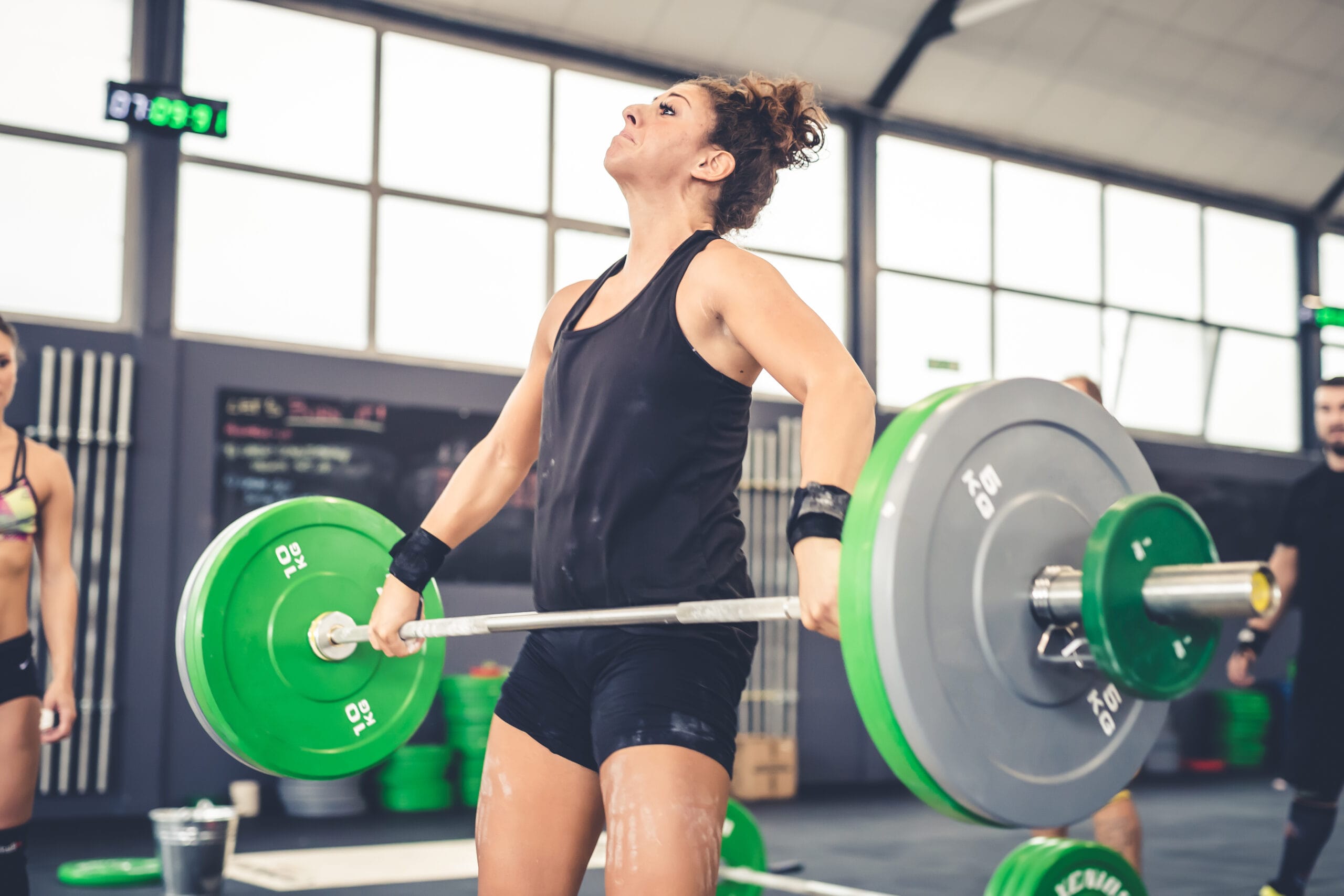
基于速度的训练和自动调节
现代力量训练越来越多地采用基于速度的训练 (VBT) 作为优化负荷选择和管理疲劳的工具。VBT 并非严格遵循预设的百分比,而是根据运动表现进行实时调整。这种方法在持续举重并管理疲劳累积时尤其有用。
将速度损失作为训练变量的研究表明,不同的速度损失阈值会产生不同的疲劳和恢复曲线11. 无论绝对负荷是多少,以 20% 速度损失进行训练,相比以 40% 速度损失进行训练,疲劳感更少,恢复更快。此信息有助于根据当前的准备状态和恢复状态制定更精准的训练方案。
自动调节功能进一步扩展了这一概念,根据每日表现指标调整训练变量。自动调节功能无需您不顾自身感受,强迫自己尝试特定重量,而是可以根据杠铃速度、自觉用力程度,甚至简单的准备度问卷等因素来调整负荷。
解决个人症结
由于粘点是举重训练中常见的限制因素,因此制定系统性地解决这些粘点的策略可以显著提升力量。关键在于找出你个人的粘点所在,然后实施针对性的训练方法来克服这些弱点。
对于在关节活动范围早期出现的粘滞点,诸如暂停、完全停止或压杆等技巧可能非常有效。这些方法迫使你从机械上处于劣势的位置发力,从而强化你通常难以完成的关节活动范围。对于在关节活动范围后期出现的粘滞点,可以使用弹力带或铁链等阻力训练方法,为粘滞区域提供渐进式负荷。
部分关节活动度训练也是解决痛点的有效方法。通过缩短关节活动度,并增加重量,可以增强你在这些特定位置的力量和自信心。这种方法应该作为全关节活动度训练的补充,而不是替代。
技术在现代力量训练中的作用
Spleeft 应用程序如何彻底改变重物搬运
在当今的数字时代,成功的力量训练越来越依赖于数据驱动的方法和智能化的训练计划。这就是…… Spleeft 应用程序 对于渴望突破体重瓶颈的训练者来说,Spleeft App 的价值无可估量。它无需猜测最佳负荷或遵循通用的训练计划,而是根据您的个人表现数据提供个性化的训练建议。
这款应用的先进算法会考虑训练历史和当前表现水平等因素,为每次训练推荐最佳负荷和训练量。这种方法大大减少了在决定如何举起更大重量并合理控制疲劳时需要进行的猜测。你无需再纠结今天是否应该挑战新的个人纪录,这款应用会根据你的准备指标提供数据驱动的指导。.
Spleeft App 还擅长自动执行周期化原则。它无需用户掌握复杂的周期化模型,而是系统地管理训练变量的变化,以确保持续进步,同时防止过度训练。这种自动化周期化对于那些理解系统化进阶重要性但缺乏专业知识自行设计最佳训练计划的训练者来说尤其有用。
与现代培训方法的融合
Spleeft App 无缝整合了本文讨论的诸多高级训练理念。该应用内置了基于速度的训练原则,可根据训练表现进行实时调整。它能根据速度数据和其他表现指标,建议何时加大训练强度,何时适当放慢速度。.
Spleeft App 的每日状态评估让自我调节变得轻松自如。它不会像传统健身应用那样,不顾自身感受地僵化地执行预设的训练计划,而是会根据你的当前状态调整训练建议。这种方法优化了训练压力和恢复之间的平衡,确保每次训练都能促进长期进步,而不是仅仅累积疲劳。.
实际实施策略
每周编程考虑事项
在设计持续举起更大重量的训练计划时,每周的训练安排至关重要。关于训练频率的研究表明,从每周一次的“周末战士”训练到每日训练,不同的训练频率都能带来力量的增长。3. 关键是将频率与恢复能力和训练目标相匹配。
对于大多数努力提高大重量训练的训练者来说,每周每种动作模式2-3次的训练频率,能够在刺激和恢复之间取得最佳平衡。这样既能充分练习动作模式,又能在每次训练之间提供充足的恢复时间。然而,最佳的具体频率会因训练经验、年龄、恢复能力和其他生活方式因素而异。
一周内训练量的分配也至关重要。与其将所有大重量训练塞进一次残酷的训练中,不如将训练量分配到多个训练中,通常能带来更好的效果,并降低受伤风险。这种方法能让你在每次训练中都获得更高质量的训练,并更好地管理疲劳的积累。
渐进式加载策略
每周增加五磅的传统方法对初学者来说非常有效,但随着训练的深入,这种方法就变得不切实际了。高级训练者需要更复杂的渐进模型,以应对力量发展的非线性特性。
双倍进步 这是一种有效的替代方案,即先增加次数,再增加负荷。例如,完成目标组数和次数后,不要立即增加重量,而是先增加次数。一旦您能够完成更多超过目标的次数,再增加负荷,并回到基准次数。
波浪载荷 提供了另一种更复杂的方法,包括在训练期间和训练课之间周期性地增加和减少训练负荷。这种方法允许训练者接触更大的重量,同时比线性进展模型更有效地管理疲劳积累。
下表说明了不同的进展策略及其应用:
| 进阶策略 | 最适合 | 例子 |
|---|---|---|
| 线性 | 初学者 | 每周增加5磅 |
| 双倍进步 | 中间的 | 增加次数,然后增加重量 |
| 波浪载荷 | 先进的 | 周期性负载变化 |
| 复杂性进展 | 所有级别 | 增加运动复杂性 |
| 自动调节 | 经验丰富 | 每日负荷调整 |
营养和恢复注意事项
提升重物搬运性能
你举起更重重量的能力并非完全取决于健身房内的训练。营养在满足举重训练的能量需求以及促进训练间的恢复方面起着至关重要的作用。充足的蛋白质摄入有助于肌肉蛋白质合成,而足够的碳水化合物则为高强度训练提供能量。.
营养补充的时机对举重表现也至关重要。训练前的营养应侧重于提供随时可用的能量,且不会引起消化不良。训练后的营养应优先补充糖原储备,并提供用于肌肉蛋白质合成的氨基酸。
水分状况会显著影响力量表现,即使是轻微的脱水也会降低力量输出能力。对于认真坚持持续举重的训练者来说,全天保持最佳水分状态是提升运动表现不可或缺的环节。
睡眠和恢复优化
睡眠质量和持续时间直接影响您举起更大重量的能力。睡眠期间会发生重要的恢复过程,包括生长激素释放、肌肉蛋白质合成和神经系统恢复。睡眠时间不足或睡眠质量差会严重损害力量表现并增加受伤风险。
大多数力量型运动员每晚需要7-9小时的优质睡眠才能达到最佳恢复和运动表现。保持规律的睡眠作息、优化卧室环境以及睡前避免接触屏幕等睡眠卫生习惯,可以显著改善睡眠质量。
轻度运动、按摩或拉伸等主动恢复方法可以促进恢复过程,且不会增加显著的训练压力。然而,这些方法应该作为补充,而非取代充足的睡眠和营养作为主要的恢复方式。
结论
突破重量平台期需要多方面的方法,而不仅仅是每次训练都努力增加重量。了解力量发展背后的科学原理,实施复杂的训练计划,并利用像 Spleeft App 这样的现代科技,可以彻底改变你的举重训练方式。
关键在于,举起更重的重量不仅仅关乎肌肉力量——它关乎优化整个系统,包括训练计划、恢复、营养和心理状态。当你不再问“我明天如何举起更重的重量”,而是开始问“我如何系统地逐步提升举起更重重量的能力”时,一切都会改变。.
无论你是在某个特定动作上遇到瓶颈,还是在所有大重量训练中都遇到了瓶颈,请记住,瓶颈期只是暂时的障碍,而非永久的限制。只要拥有正确的策略、足够的耐心,并持续运用基于实证的原则,你就能突破这些障碍,达到新的力量水平。.
Spleeft App 是您一路上的智能训练伙伴,提供基于数据的洞察和个性化建议,助您轻松应对复杂的高级力量训练。您无需猜测最佳负荷或遵循通用的训练计划,而是可以利用先进的算法和循证训练方案,确保每次训练都能帮助您实现举起更大重量的长期目标。
参考
1 Plotkin, D., Coleman, M., Van Every, D., Maldonado, J., Oberlin, D., Israetel, M., … & Schoenfeld, BJ (2022). 不增加负荷的渐进超负荷?负荷或重复次数递增对肌肉适应的影响。. PeerJ,10,e14142。
2 Belvirda, V., Rago, V., Barreira, D., Krustrup, P., Nevill, A., & Rebelo, A. (2022). 一个基于受试者定制变异性的平台,用于克服运动训练中的平台效应:一项叙述性评论。 运动医学 – 开放, 8(1), 1-18.
3 Refalo, MC、Hamilton, DL、Paslakis, G.、Kohl, M.、Kaminsky, LA 和 Sheppard, JM (2024)。阻力训练最小剂量策略在提升普通人群肌肉力量方面的应用:概述。 运动医学, 54(3), 733-762.
4 Radaelli, R.、Taaffe, DR、Newton, RU、Galvão, DA 和 Miler, MK (2015)。阻力训练和停止训练对老年人肌肉和身体功能的影响的时间进程。. 欧洲应用生理学杂志, 115(12), 2285-2294.
5 Saraceni, N., Kent, P., Ng, L., Campbell, A., Straker, L., & O'Sullivan, P. (2022). 举重技巧:为什么我们没有利用证据来优化动作? 物理治疗,102(1),pzab226。
6 Coratella, G.、Chemello, A. 和 Schena, F. (2019)。复杂性:力量训练中一种新颖的负荷渐进策略。 生理学前沿, 10, 839.
7 Van den Tillaar, R.、Ettema, G. 和 Saeterbakken, AH (2016).理解并克服阻力训练中的症结。 运动医学, 46(11), 1663-1672.
8 Fleck, SJ (2010). 分期。 力量与训练杂志, 32(4), 91-92.
9 Rønnestad, BR, Hansen, J., Vegge, G., & Mujika, I. (2014). 七天高强度训练超负荷期对竞技自行车运动员表现和生理的影响。. PLoS One,9(12),e115308。
10 Schoenfeld, BJ, Grgic, J., & Krieger, J. (2020).过度训练的肌肉内机制。 欧洲运动科学杂志, 20(5), 621-633.
11 Pareja-Blanco, F.、Rodríguez-Rosell, D.、Sánchez-Medina, L.、Ribas-Serna, J.、López-López, C.、Mora-Custodio, R.... & González-Badillo, JJ (2019)。组中不同负荷大小和速度损失的阻力训练后的恢复时间过程。. 运动的, 7(3), 59.

